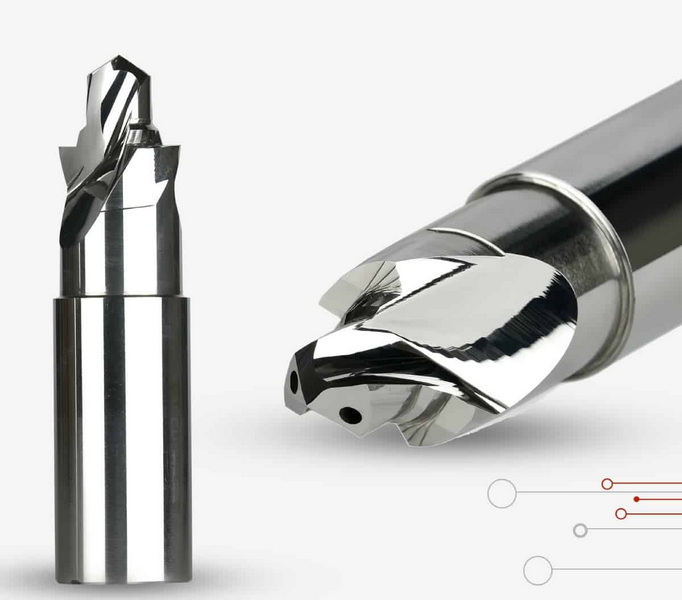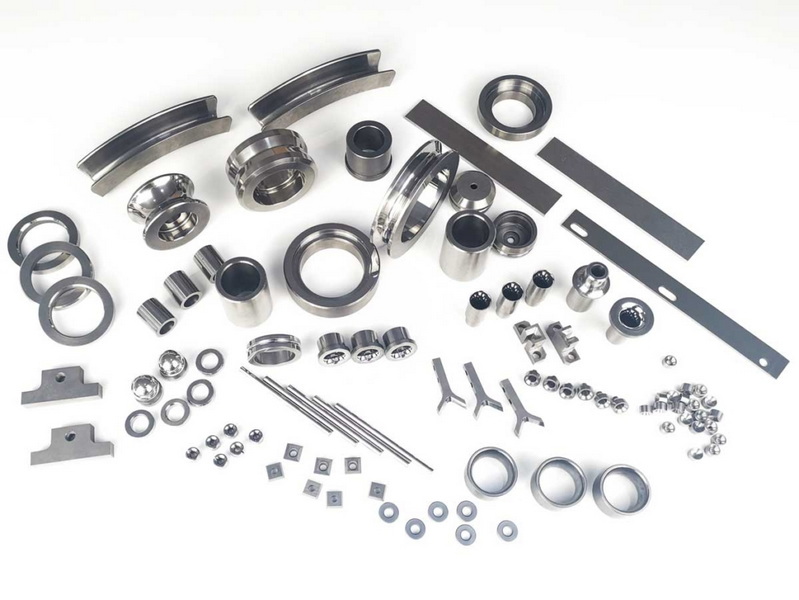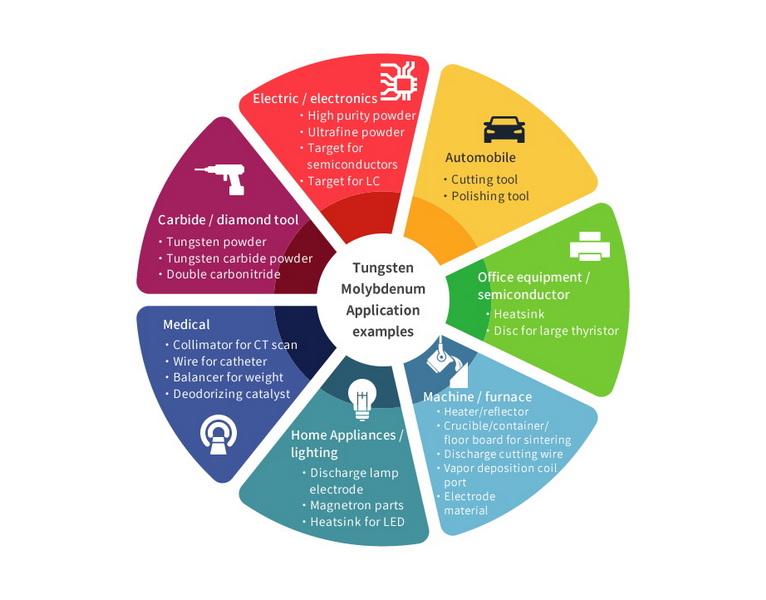Content Menu
● Introduction to Titanium and Tungsten Carbide
>> Titanium
>> Tungsten Carbide
● Comparison of Mechanical Properties
>> Hardness
>> Tensile Strength
>> Flexibility and Brittleness
● Applications and Uses
>> Titanium Applications
>> Tungsten Carbide Applications
● Detailed Analysis of Properties
>> Thermal Properties
>> Corrosion Resistance
>> Cost and Availability
● Manufacturing Processes
>> Titanium Manufacturing
>> Tungsten Carbide Manufacturing
● Environmental Impact
● Conclusion
● Frequently Asked Questions
>> 1. What is the primary advantage of titanium over tungsten carbide?
>> 2. Why is tungsten carbide more scratch-resistant than titanium?
>> 3. In which applications is titanium preferred over tungsten carbide?
>> 4. What are the drawbacks of using tungsten carbide?
>> 5. Can titanium be used in high-temperature applications?
● Citations:
When comparing titanium and tungsten carbide, it's essential to understand their unique properties and applications. Titanium is renowned for its high strength-to-weight ratio, corrosion resistance, and flexibility, making it ideal for aerospace, automotive, and medical industries. On the other hand, tungsten carbide is celebrated for its exceptional hardness and scratch resistance, often used in high-wear applications like cutting tools and jewelry. This article will delve into the differences between these two materials, exploring their strengths and weaknesses.

Introduction to Titanium and Tungsten Carbide
Titanium
Titanium is a silver-colored metal known for its remarkable characteristics:
- High Strength-to-Weight Ratio: Titanium offers a strength similar to steel but is significantly lighter, making it perfect for applications where weight reduction is crucial, such as in aircraft and high-performance vehicles.
- Corrosion Resistance: Titanium forms a protective oxide layer, enhancing its resistance to corrosion in harsh environments like seawater and chlorinated solutions.
- Biocompatibility: Its non-toxic nature and ability to bond well with human bone make titanium an excellent choice for medical implants.
Tungsten Carbide
Tungsten carbide is a compound of tungsten and carbon, known for its:
- Exceptional Hardness: It ranks between 8.5 to 9 on the Mohs hardness scale, making it highly resistant to scratches and wear.
- High Density: Tungsten carbide is much denser than titanium, contributing to its heavy weight.
- Thermal Conductivity: Tungsten has a high thermal conductivity, ideal for applications requiring efficient heat dissipation.
Comparison of Mechanical Properties
Hardness
Tungsten carbide is significantly harder than titanium, with a Mohs hardness of 9 compared to titanium's 6. This makes tungsten carbide more resistant to scratches but also more brittle, prone to cracking under impact.
Tensile Strength
Tungsten carbide generally exhibits a higher tensile strength than titanium, meaning it can withstand more stress before breaking. However, titanium's tensile strength is still impressive, especially considering its lightweight nature.
Flexibility and Brittleness
Titanium is more flexible and less brittle than tungsten carbide, making it less likely to crack under stress. This flexibility is crucial in applications where durability and resilience are key.
Applications and Uses
Titanium Applications
- Aerospace: Used in aircraft components due to its strength-to-weight ratio and corrosion resistance.
- Automotive: High-performance parts like exhaust systems benefit from titanium's durability and lightness.
- Medical: Ideal for implants due to its biocompatibility and corrosion resistance.
Tungsten Carbide Applications
- Cutting Tools: Its hardness makes it perfect for drill bits and saw blades.
- Jewelry: Tungsten carbide rings are popular for their scratch resistance and durability.
- Industrial Wear Parts: Used in environments requiring high resistance to abrasion.

Detailed Analysis of Properties
Thermal Properties
Titanium has a relatively low thermal conductivity compared to tungsten carbide. However, titanium's thermal expansion is lower, which can be beneficial in applications where dimensional stability is important. Tungsten carbide, with its high thermal conductivity, is often used in applications requiring efficient heat transfer.
Corrosion Resistance
Titanium excels in corrosion resistance due to its protective oxide layer, which forms naturally upon exposure to air. This makes it suitable for use in harsh environments such as seawater and chemical plants. Tungsten carbide, while resistant to wear, does not offer the same level of corrosion resistance as titanium.
Cost and Availability
Titanium is generally more expensive than tungsten carbide due to the complex extraction and processing required. However, its unique properties often justify the higher cost in critical applications. Tungsten carbide, being a composite material, can be more cost-effective for certain uses like cutting tools.
Manufacturing Processes
Titanium Manufacturing
Titanium is typically manufactured through the Kroll process, which involves reducing titanium tetrachloride with magnesium. This process is energy-intensive and contributes to titanium's higher cost. Titanium alloys can be formed using various techniques, including forging and machining.
Tungsten Carbide Manufacturing
Tungsten carbide is produced by sintering tungsten carbide powder with a binder, usually cobalt. This process allows for the creation of complex shapes and structures, which are essential for cutting tools and wear parts.
Environmental Impact
Both titanium and tungsten carbide have environmental considerations. Titanium mining can have ecological impacts, though its recyclability helps mitigate these effects. Tungsten carbide production involves the use of cobalt, which has raised concerns regarding mining practices and toxicity.
Conclusion
In summary, while tungsten carbide is significantly harder and more scratch-resistant than titanium, titanium offers a superior strength-to-weight ratio and flexibility. Titanium is not stronger than tungsten carbide in terms of hardness or tensile strength but excels in applications requiring durability and lightness. Tungsten carbide, on the other hand, is ideal for high-wear applications where hardness is paramount.

Frequently Asked Questions
1. What is the primary advantage of titanium over tungsten carbide?
Titanium's primary advantage is its high strength-to-weight ratio and flexibility, making it ideal for applications where weight reduction and durability are crucial.
2. Why is tungsten carbide more scratch-resistant than titanium?
Tungsten carbide is more scratch-resistant due to its higher hardness on the Mohs scale, ranking between 8.5 to 9 compared to titanium's 6.
3. In which applications is titanium preferred over tungsten carbide?
Titanium is preferred in aerospace, automotive, and medical applications due to its lightness, corrosion resistance, and biocompatibility.
4. What are the drawbacks of using tungsten carbide?
Tungsten carbide is brittle and can crack under impact. It is also very dense, making it heavy, which can be a disadvantage in certain applications.
5. Can titanium be used in high-temperature applications?
While titanium has good heat resistance, it is not as effective as tungsten in high-temperature applications due to tungsten's higher thermal conductivity and melting point.
Citations:
[1] https://shop.machinemfg.com/titanium-vs-tungsten-whats-the-difference/
[2] https://jphe.amegroups.org/article/view/4265/10863
[3] https://www.aemmetal.com/news/tungsten-vs-titanium.html
[4] https://onlinelibrary.wiley.com/doi/10.1002/adem.201801359
[5] https://www.stevengdesigns.com/blogs/news/tungsten-carbide-rings-vs-titanium-rings
[6] https://blog.csdn.net/qq_34917728/article/details/125122327
[7] https://www.justmensrings.com/blogs/justmensrings/what-are-the-differences-between-titanium-and-tungsten
[8] https://pmc.ncbi.nlm.nih.gov/articles/PMC10096176/
















